Summer comes as a sudden burst in New York City, a gushing declaration of heat, humidity and sun. Like a blast of fireworks or a Memorial Day hibachi grill, the heat is suddenly on for the long haul — no more stalling, sputtering, or beating around the bush. “Coffee” becomes cold brew; shoes become sandals; parties become barbecues; ramen becomes chilled noodles. This is science, and who am I to fight it?
I won’t fight it, so I will respond accordingly. Enthusiastically, even. Because I cannot, for the past five days, get enough of cold noodles. It’s like welcoming an old friend with a genuinely grateful, “Long time no see!” And it’s a taste I could keep on tasting — well, at least for as long as it’s still hot out, we’ll have to see.
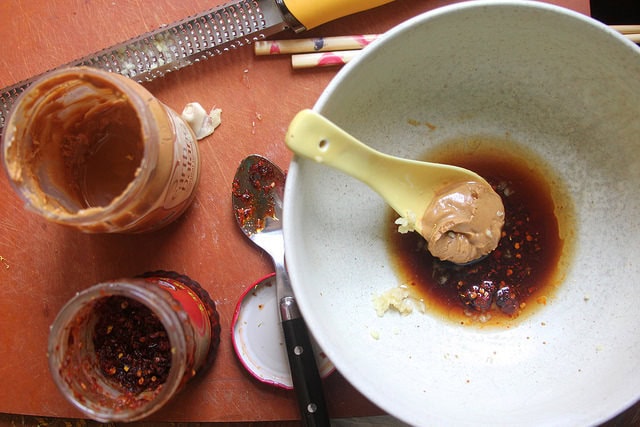
This recipe is similar to one in The Food of Taiwan for Chilled Noodles with Chicken and Sesame Sauce, a variation on the popular cold noodles found throughout the island, especially during the hot summer months. You can get boxes of cold noodles (liang mian 涼麵) with the sesame sauce and shredded veggies on the side in the refrigerated section of just about every 7-11 or other convenience store throughout Taiwan. But making it on the fly is pretty easy—and easy to adapt with whatever ingredients you have on hand.
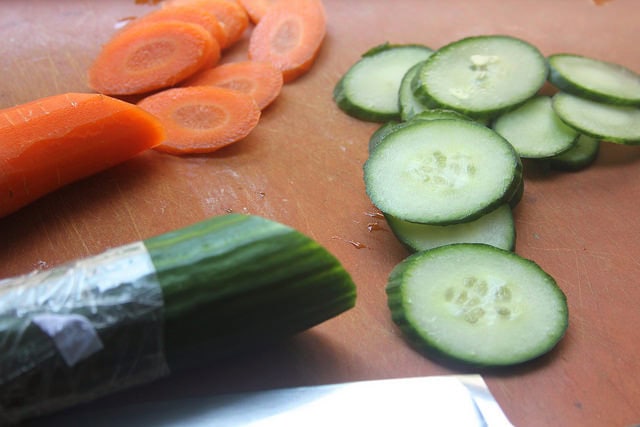
The basic components of the sauce are about equal parts soy sauce and rice vinegar, a drizzle of sesame oil, and an (optional) dab of spicy sauce of some sort (I used toasted Sichuan chili oil, but you could use any chili sauce you like). To thicken it, sesame paste is traditional, but peanut butter is a pretty good substitute, and one that my mom employed plenty of times for these noodles growing up. Since Asian sesame paste is made from toasted sesame seeds rather than raw ones, like with tahini, it has a deeper color and flavor that’s akin to roasted peanut butter. Plus, who doesn’t have peanut butter in their cupboard? Go ahead and use it just the same.
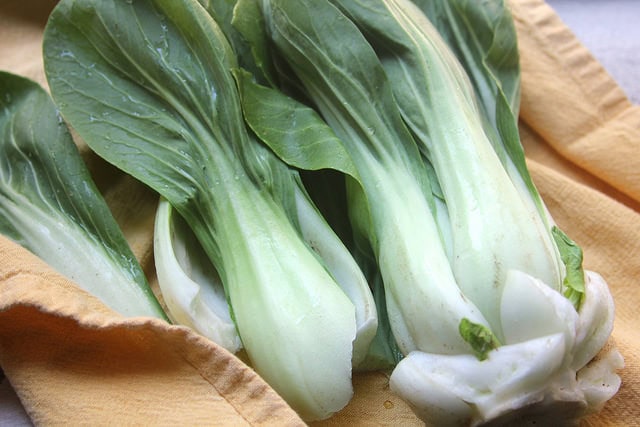
Fresh vegetables like julienned cucumber and carrot are requisite—add some fresh bean sprouts if you can find them, too. Or, blanch and shock some bok choy until crisp-tender, and sliver them from stalk to leaf for a healthy dose of greens.
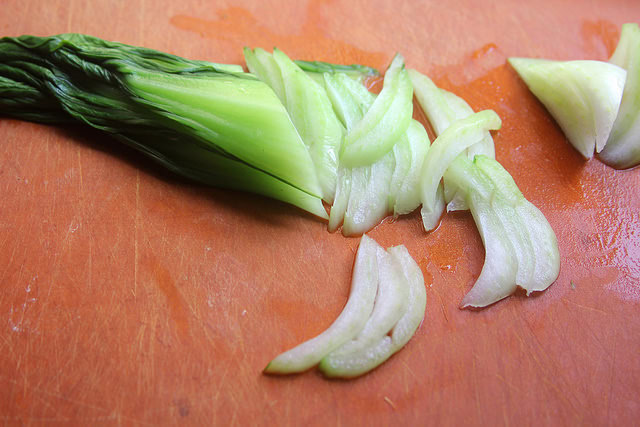
If you have leftover scraps of meat from, say, a roasted chicken, then you can always chop or shred it to pieces to toss into the noodles. But if you’re cooking chicken just for this dish, then you have the bonus of its savory cooking juices to add to the sauce. By steaming the chicken, you’ll have plenty of those juices; plus, steaming is a quick and relatively hands-off way of cooking. Just throw some chicken onto a shallow plate or dish, elevate it with a bowl or something in the bottom of a pot with a couple inches of water in the bottom, cover and steam. If they’re boneless pieces like breast or thigh that are cut fairly thin, this should take no longer than 10 minutes to cook through.
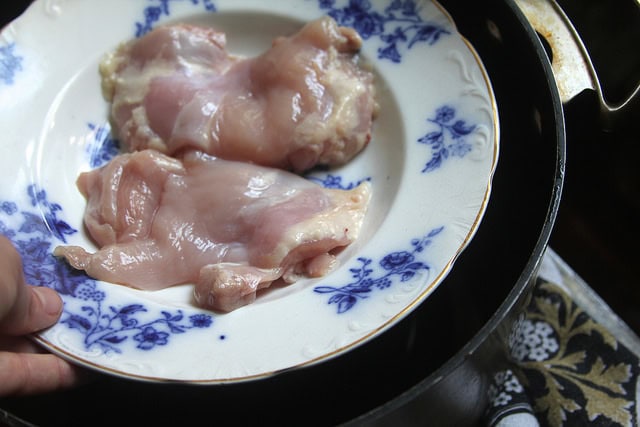
Pour all that fat and juice from the just-steamed chicken into your peanut-based sauce. This is an optional twist but makes a pretty big impact in flavor. In fact, the technique (of steaming chicken then adding its juices and fat to the sauce) is similar to another Taiwanese signature dish, Chicken over Rice. If you’re using pre-cooked chicken, then just substitute the extra liquid with some chicken stock instead. Skipping the chicken entirely for a vegetarian cold noodles? Just add some water to loosen the sauce a bit, then.
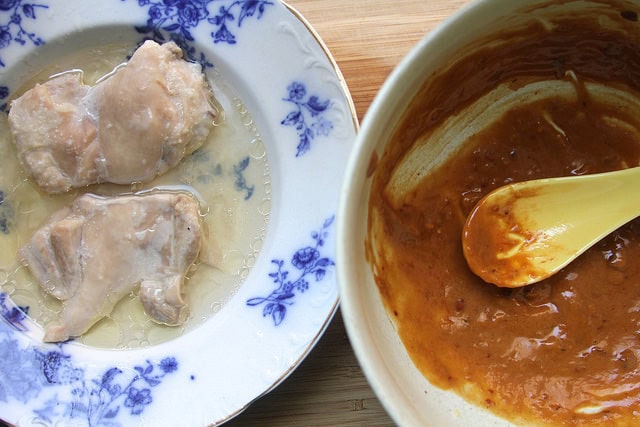
Finally, I’ve used soba noodles here, but you can apply the same recipe to any type of noodles you like—yellow chow mein, thick or thin Asian wheat noodles, or even Italian pasta like linguine. (Yes, my mom would use Italian pasta when making these noodles often, too.) If you make too much sauce, keep some of it to save for another use. Toss the noodles with the sauce just before serving so it’s slick and slippery, rather than mostly absorbed into the noodles. Whatever you add to it, this simple formula for cold noodles is a pantry staple-friendly meal perfect for whipping up on a hot summer day.
Chilled Soba Noodles with Peanut Sauce and Shredded Chicken
(makes 4-5 servings)
1 lb soba (or 4 bundles)
1/2-3/4 lb boneless chicken breasts or thighs
pinch of salt and white pepper
1 teaspoon sesame oil
for the sauce:
1/4 cup peanut butter
2 tablespoons light soy sauce or tamari
2 tablespoons rice vinegar
1 tablespoon Asian sesame oil
1 clove garlic, grated
1-2 teaspoons chili sauce or oil (optional)
juice from the steamed chicken (about 1/2 cup, or substitute with chicken stock)
for garnish:
6-8 leaves bok choy
1 medium-sized cucumber, julienned
1 medium-sized carrot, julienned
2-3 scallions, thinly sliced
sprinkle of toasted sesame seeds (optional)
Season the chicken with the salt, pepper and 1 teaspoon sesame oil. Place 2-3 inches of water to a boil in a large pot with a lid. Place a metal rack (or a bowl) inside the bottom of the pot, making sure that the water does not reach the top of it. Place the chicken on a dish on top of the rack or bowl inside the pot, and cover with the lid. Bring water to a boil, and let steam, covered, for about 10 minutes or until the chicken is cooked through. Carefully remove the plate with the chicken and all its juices, and set aside to cool.
Meanwhile, cook the noodles according to the directions on the package. Drain and rinse with cold water to cool them thoroughly, then drain well.
Prepare a bowl with ice water. Bring another pot of water to boil and drop in the bok choy leaves. Cook for 1 minute, then drain and plunge immediately in the ice bath. Once cooled completely, drain the bok choy and squeeze out the water. Finely slice the leaves from stem to leaf.
Whisk together the first six ingredients for the sauce, and adjust to taste (adding more chili, vinegar, etc as desired). Once cooled, stir in the 1/2 cup of the chicken cooking juices. Shred or chop the chicken meat.
Toss the noodles with the sauce, shredded bok choy and about half juilienned carrot, cucumber, scallions and shredded chicken. Divide amongst serving bowls and top with the remaining carrot, cucumber, scallions and chicken and the optional sesame seeds. Serve immediately.
Cost Calculator
(for 4-5 servings)
1 lb soba: $2.00
1/2 lb boneless chicken: $3.50
1 carrot: $0.50
1 cucumber: $1.50
2 scallions: $0.50
1 bunch bok choy: $2.00
1/4 cup peanut butter: $0.50
2 tablespoons soy sauce: $0.25
2 tablespoons rice wine: $0.25
1 tablespoon plus 1 teaspoon sesame oil: $0.25
1 teaspoon chili oil: $0.20
1 clove garlic: 0.10
salt, pepper, optional sesame seeds: $0.10
Total: $11.65
Health Factor![]()
![]()
![]()
![]()
![]()
Five brownie points: A colorful bowl of goodness. Give yours a high ratio of vegetables to carbs and protein, adding plenty of crunchy fresh veggies along with nutrient rich, densely packed leafy greens like bok choy or napa cabbage. Using the cooking juices from the chicken in the sauce will stretch its flavor throughout the dish, helping you get the most from your meat without needing to add much to each bowl. Using soba noodles, a buckwheat variety, you’ll get a nutty taste and more whole-grain nutrition like fiber and protein compared to refined wheat noodles. Soba noodles may or may not be gluten-free; check the package to see if wheat flour has been added to it or not.
Green Factor![]()
![]()
![]()
![]()
![]()
![]()
![]()
Seven maple leaves: The best thing about this dish is that you can add whatever seasonal vegetables are local to you. Don’t have bok choy? Use green cabbage or Swiss chard instead. Too much kohlrabi from your CSA? Shred into matchsticks like the carrot or cucumber. Leftover chicken or roast pork? Toss it in. With a few jars of pantry staples like vinegar, soy sauce and peanut butter in your pantry and a dried noodle of any sort, you can adapt this recipe, with or without meat, however the season or mood fits.
4 Responses
Marie
This was great! I used zucchini instead of cucumber because that’s what I had on hand, but I still enjoyed! I can’t wait to eat this all summer long.
Cathy Erway
@Marie: Awesome, me too!
Cooking Dance
Cooking Dance is a web portal brand dedicated to today’s passionate Cooking lover. From the creators of cooking recipes, it’s for the people, by food people. We throw open the doors for this audience on online
solitaire
This soba noodles looks so delicious~ I’ve not tried any but soba is really famous. Thank you for sharing the recipe.